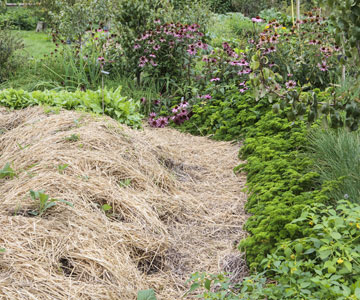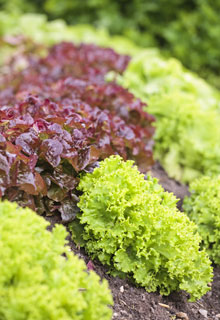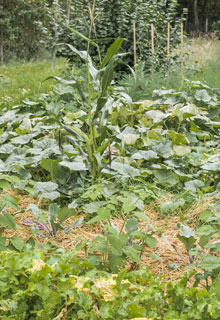The 'permaculture', for an easier vegetable garden!
• Sow spring vegetables (under cover)
• Sow spring vegetables (in the open air)
• Sow winter vegetables
• What can you do in the vegetable plot in autumn ?
• What can you do in the vegetable plot in winter ?
• What can you do in the vegetable plot in spring ?
• What can you do in the vegetable plot in summer ?
• The companionship of vegetables
• The 'permaculture', for an easier vegetable garden!
• Vegetables in pots
• How to harvest a maximum of pot-grown vegetables
• Sow aromatic herbs in pots
• Grow aromatic plants in pot
• Succeeding in growing tomatoes
• Combine vegetables with flowers
• Vegetable seed sowing calendar
• Herb seeds sowing calendars
Soil Preparation Tools, Compost, Weed Control Fabrics, Seed-Starting supplies, Herb Pots, Vegetable plots, Kitchen Gardens, Tree stakes and ties...
The 'permaculture' is an innovative technique which gets its inspiration from nature to offer excellent growing conditions to crops, without having to work the soil or weed too much. To try urgently!

Glimpse of the 'permaculture' at the Bec-Hellouin farm, in Normandy.
The principle
In a classic forest, the soil is always covered with a layer of dead leaves. Yet nobody removes the weeds from the base of the trees and this does not stop them from growing. The permaculture idea is born from this simple observation: the soil at the base of cultivations must never be left bare. Vegetables benefit from it as they need a lot less watering and fertilizer. The weeds are less invasive, reducing the amount of weeding needed. But, particularly as the ground's life is intense, the soil does not get compacted (except where frequently walked upon). So, there is no need to break your back digging. In the end, the permaculture is the art of making nature work for you!

The permaculture is particularly intended for vegetable plots.
In practice
Start by delimiting small growing areas, so you can walk in between them and get access to your cultivations. The ideal is to set up diamond-shaped plots, laid out like a tiled floor. Do not go over 1.20m in width for each plot so as not to have to step over it in order to get to the centre and compact the soil. Then the plots must be set up in mounts or raised squares. Setting up the soil in mounds facilitates harvesting, sowing, transplanting and pricking out and avoid that cultivations grown in wet areas suffer from humidity. Plots held by wooden planks make you lose a little bit of space.

Salads grown on mounds of soil.
Clear the space around young seedlings
The only areas that can be left bare are the ones where you have recently transplanted vegetables or sown in situ. Young plantlets are sensitive to having to compete against covers which can put them in the shade. But, once well-established you can mulch their base. A layer of 3cm is enough but place a layer as thick as 5cm at the base of well- established cultivations with have a long cycle (potatoes, marrows). Keep an eye out for slugs around salads and cabbages. A little surveillance will be required, particularly in wet weather!

A soil which is always covered with mulch is the basic rule of 'permaculture'.
Mulch matters
Mulches bought in bags (flakes, Pine bark…) are useful for small areas and in addition of other matters which can be used as mulch: mixing different matters together is always preferable.
Straw or clean hay (seedless) are the best matters for 'permaculture' as they fulfil their role without encouraging the presence of slugs, contrary to dead leaves and other waste matters.
Green wastes… are not waste! All cuttings and cultivations' wastes can be used as mulch. You only need to avoid placing contaminated wastes at the roots of sensitive cultivations. Lawn cuttings are useful mulch around ornamental plants such as perennials and shrubs. Beware though: do not place too much in one go (5cm each time).















































































































































































































































